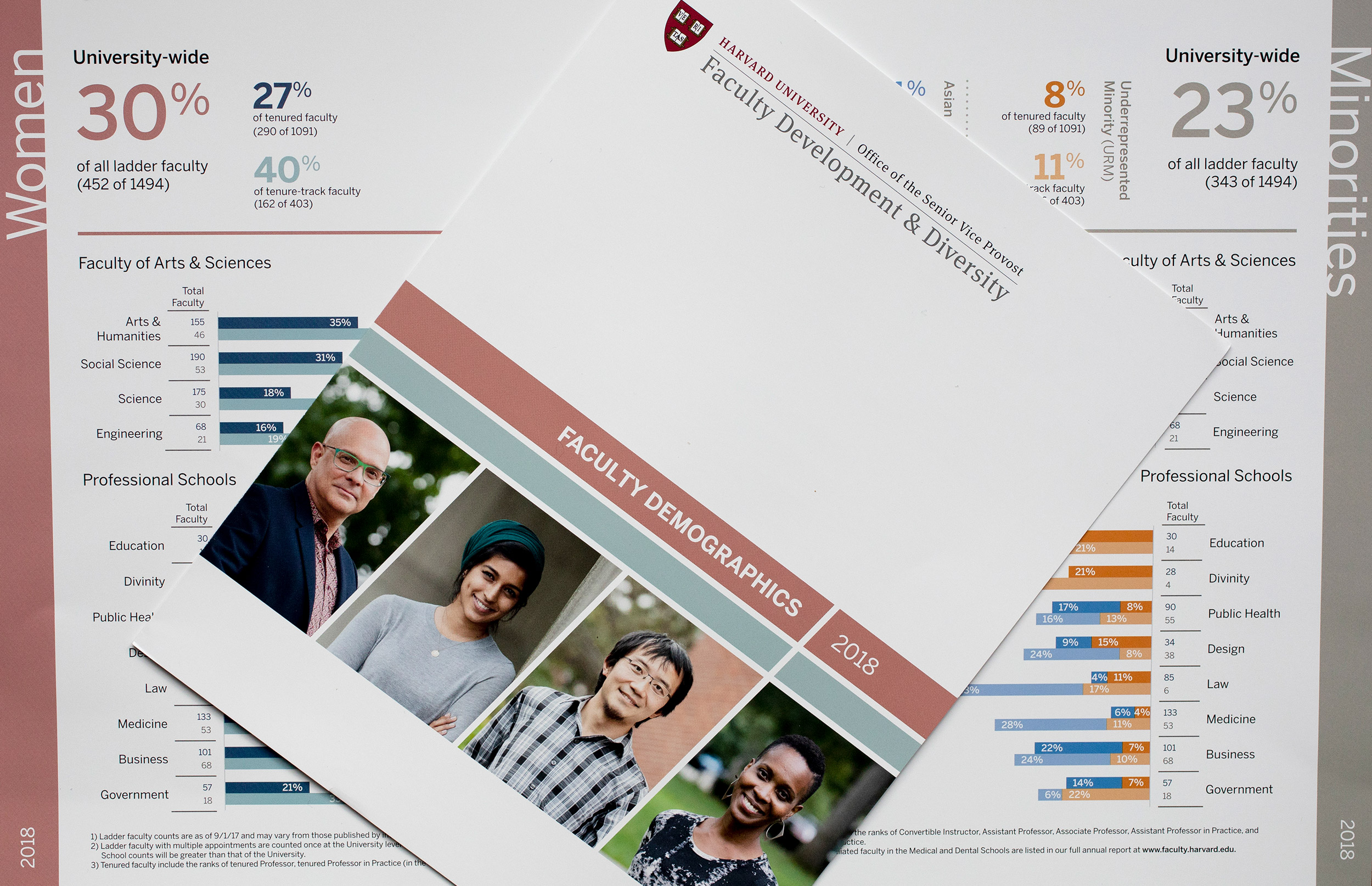
Harvard’s faculty is more diverse than ever, with women making up 30 percent of tenured and tenure-track faculty and minorities making up 23 percent.
Rose Lincoln/Harvard Staff Photographer
Progress on faculty diversity
Efforts are ‘front and center on the minds of all University leadership’
Harvard University continues to make progress in its commitment to diversifying its faculty, according to the annual report from the Office of Faculty Development and Diversity. Harvard’s faculty is more diverse than ever, with women making up 30 percent of tenured and tenure-track faculty and minorities making up 23 percent. Of the 84 tenured and tenure track-professors who joined Harvard this year, 42 percent are women and 36 percent are minorities.
“Increasing the diversity of the Harvard faculty is front and center on the minds of all University leadership,” said Judith Singer, James Bryant Conant Professor of Education and senior vice provost for Faculty Development and Diversity. “That certainly goes for me, in my role, but I can say it goes for the current leadership, President Faust, and Provost Garber, and also for President-elect Larry Bacow.”
Changes in the composition of faculty are incremental because turnover is low. In any given year, approximately 95 percent of Harvard faculty members remain. On average, the University welcomes about 70 new faculty members a year, against a base of nearly 1,500. The University’s shift to a tenure track in the early 2000s helped drive this change, creating a pipeline for tenured professors. In addition, Schools, departments, and the University have done trainings on how to mitigate implicit bias in the search process and how to recruit faculty from a wider variety of backgrounds and institutions.
“By not searching widely for talent, you’re overlooking talent,” Singer said. “It’s not an effort to just hire more women and minorities, but an effort to celebrate inclusive excellence. We are searching more widely and being more proactive about recruiting.”
Tenure-track faculty members are consistently more diverse across higher education, and the reality is no different at Harvard. The share of female tenure-track faculty is now at 40 percent, up slightly from last year, while 32 percent of tenure-track faculty members are minorities.
Progress is also being made among tenured faculty. Twenty-seven percent of tenured positions across the University are held by women, also up slightly from 2017. In the past 11 years, the overall size of the senior faculty has increased by 13 percent, while the number of tenured women has grown by 46 percent.
Meanwhile, 20 percent of tenured faculty members are minorities, reflecting a 73 percent increase in the number of minority tenured faculty since the 2007-08 academic year. Especially notable: increases in the number of minority faculty over this time are closely split between Asian and Asian-American faculty, up 68 percent, and underrepresented minority faculty, up 82 percent.
The Office of Faculty Development and Diversity, which published the report, is Harvard’s central faculty affairs office, and it is devoted to the development, implementation, and evaluation of University-wide programs designed to improve faculty life and diversity.
“We’ve been doing a lot of work developing programs, rolling out programs, and enhancing programs to improve the quality of life for faculty. We want all Harvard faculty to feel supported,” said Singer.
Among the initiatives designed to support faculty is the ACCESS child-care program, which helps tenured, tenure-track, and senior non-ladder faculty with young children meet their family caregiving needs, so that they may also succeed in their academic careers. Over the past decade, Harvard has awarded more than $8 million in child-care scholarships to faculty, which can be used for any type of care, including non-Harvard-affiliated centers, nannies, and family day care. The University has also shifted admissions in its six child-care centers to give faculty priority, and this past year offered a spot to all faculty members who applied for one.
“Competition for faculty is fierce,” Singer said. “Every other institution is trying to diversify its faculty. So we want to mitigate push factors that might cause people to leave, and we work very hard to retain people. Part of the strategy of moving to a tenure track is the hope that if we tenure from within, faculty will put down roots here, feel committed to the institution, and that in the long run they’ll be more likely to stay.”




